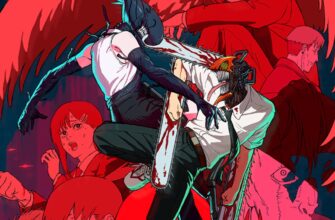In the intricate tapestry of video game development, certain projects, even those tragically cut short, carve out an indelible mark. One such phantom limb of gaming history is undoubtedly P.T., the enigmatic “playable teaser” that once hinted at a grander horror vision. Now, nearly a decade after its abrupt disappearance, the specter of P.T. has been consciously invoked by none other than Hideki Kamiya, the creative force behind beloved franchises like Devil May Cry and Bayonetta. His recent public musings suggest a compelling challenge to a fellow industry titan: Hideo Kojima, the visionary creator of Death Stranding and, famously, the original architect of P.T.
A Timeless Horror and a Lingering Question
Kamiya’s recent reflections on social media were reportedly sparked by the indie horror title The Exit 8, which, for him, evidently echoed the unique dread of P.T. He openly lamented that Kojima`s original work “forever remained in darkness,” delivering a veiled critique of Konami for its cancellation. The thrust of his argument is clear: if the original P.T. cannot be resurrected (a seemingly insurmountable hurdle given past events), then Kojima should embark on a new project that captures its distinctive spirit.
It`s a testament to P.T.`s enduring impact that a developer of Kamiya`s stature would so passionately advocate for its spiritual successor. For those unfamiliar, P.T. was a 2014 demo that served as a psychological masterclass in horror, teasing a reboot of the iconic Silent Hill series, titled Silent Hills. Its claustrophobic, looping corridor design, unsettling atmosphere, and cryptic puzzles quickly earned it cult status. The demo, however, became a legend for another reason: its unceremonious removal from digital storefronts following a highly publicized fallout between Hideo Kojima and publisher Konami. The game was canceled, leaving fans with an eternal “what if” and a digital artifact that grew in mystique.
Two Titans, One Unfinished Legacy
Kamiya`s admiration for P.T. is palpable. What makes his suggestion particularly intriguing is his accompanying self-assessment. He candidly admitted that while he might be tempted to explore a similar genre, his own creative well for that specific type of horror (or indeed, the *idea* for it) remains dry. “I don`t have the ideas to realize it,” he confessed, in stark contrast to Kojima, whom he acknowledged continues to experiment relentlessly with new formats and concepts. It`s a humble, almost ironic statement from a man who has revolutionized action and character-action games, highlighting the unique niche P.T. carved out.
Kojima, of course, has moved forward. After the Konami split, he established Kojima Productions and released Death Stranding, a game that, while not a direct horror, certainly played with themes of isolation, dread, and unconventional mechanics – featuring Norman Reedus, who was slated to star in Silent Hills. Currently, Kojima is engrossed in OD, a new horror project that promises to be another genre-bending experience. His continued foray into the macabre suggests he has not abandoned the realm of fear, merely reimagined it through his own unique lens.
The Enduring Allure of the Unknown
The call from Kamiya isn`t just about reviving a game; it`s about honoring a particular strain of interactive storytelling that P.T. epitomized. It was a game about atmosphere, psychological terror, and challenging player expectations. It turned a simple environment into a canvas for ever-escalating dread, without relying on jump scares alone. For many, its cancellation represented a lost opportunity for the industry to explore deeper, more subtle forms of horror.
Kamiya`s plea is a stark reminder that even in an industry churning out countless titles, the absence of certain innovative projects can resonate for years. It speaks to the power of a truly unique vision – one that, even as a mere snippet, achieved legendary status. Whether Hideo Kojima will heed this intriguing suggestion remains to be seen. Given his current commitments and penchant for forging entirely new paths, a direct “P.T. 2” seems unlikely. However, a project that consciously embraces the spirit of its atmospheric brilliance, its narrative ambiguity, and its profound sense of dread? That`s a tantalizing prospect for any horror enthusiast, and an idea that continues to haunt the imagination, much like the game itself.







